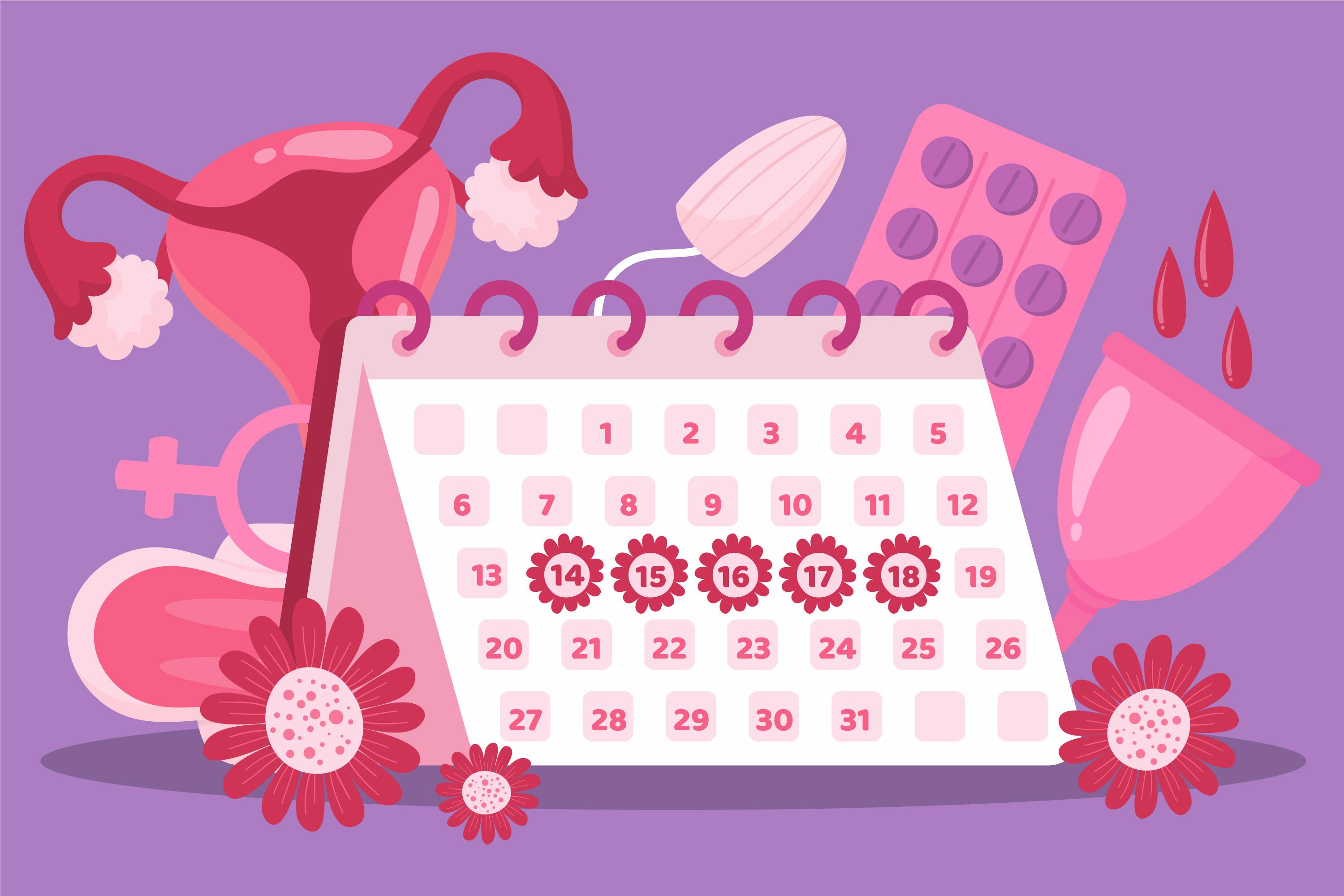The four phases: menstrual, follicular, ovulation, luteal

The menstrual cycle is more than just your period. It’s a complex process that your body goes through every month to prepare for the possibility of pregnancy. Understanding the four main phases—menstrual, follicular, ovulation, and luteal—can help you better track your cycle, manage symptoms, and feel more in control of your body. Whether you're trying to conceive, manage hormonal changes, or simply learn more about your health, knowing these phases is essential.
Let’s break down each phase to understand what’s happening inside your body.
1. Menstrual Phase (Days 1–5)
This is the phase most people are familiar with—it’s when you get your period.
What Happens:
-
The uterine lining (endometrium) that built up during the previous cycle sheds through the vagina.
-
This shedding is caused by a drop in estrogen and progesterone levels.
-
The menstrual flow typically lasts between 3 to 7 days.
What You Might Feel:
-
Cramps, fatigue, mood swings, lower back pain
-
Low energy levels
Tips for This Phase:
-
Use a period tracker app to log the first day of your period—it marks Day 1 of your cycle.
-
Rest when needed, stay hydrated, and use heat packs to ease cramps.
-
Eat iron-rich foods to replenish lost nutrients.
2. Follicular Phase (Days 1–13)
This phase overlaps with your period but continues afterward, leading up to ovulation.
What Happens:
-
The pituitary gland releases follicle-stimulating hormone (FSH).
-
FSH stimulates your ovaries to produce follicles, each containing an immature egg.
-
Usually, one follicle becomes dominant and continues to develop.
-
Estrogen levels rise, helping rebuild the uterine lining.
What You Might Feel:
-
Improved mood and energy
-
Increased focus and productivity
Tips for This Phase:
-
This is a great time to start new projects or exercise routines.
-
Include protein and leafy greens in your diet to support hormone production.
3. Ovulation Phase (Around Day 14)
This is the shortest phase but arguably the most important if you're tracking fertility.
What Happens:
-
A surge in luteinizing hormone (LH) triggers the release of a mature egg from the ovary.
-
The egg travels down the fallopian tube and survives for about 12–24 hours.
-
Estrogen peaks, and your body may produce more cervical mucus.
What You Might Feel:
-
Mild pelvic pain (mittelschmerz)
-
Increased libido
-
Clear, stretchy cervical mucus (egg white consistency)
Tips for This Phase:
-
If trying to conceive, this is your most fertile window.
-
Monitor ovulation signs or use an ovulation test kit.
-
Stay hydrated and active, but avoid overheating the body.
4. Luteal Phase (Days 15–28)
After ovulation, the body prepares either for pregnancy or the next menstrual cycle.
What Happens:
-
The ruptured follicle becomes the corpus luteum, which produces progesterone.
-
Progesterone supports a possible pregnancy by maintaining the uterine lining.
-
If no pregnancy occurs, progesterone levels drop, leading to the start of menstruation.
What You Might Feel:
-
Premenstrual symptoms (PMS): mood swings, bloating, breast tenderness
-
Possible food cravings or irritability
Tips for This Phase:
-
Reduce caffeine, sugar, and salty foods to ease PMS.
-
Practice self-care: gentle yoga, journaling, or meditation.
-
Track your symptoms to identify patterns for future cycles.
Why It Matters
Understanding your menstrual cycle is key to managing your reproductive health and overall well-being. Each phase influences not only your fertility but also your mood, energy, and even how your body responds to stress or exercise. By tracking your cycle and tuning into how you feel in each phase, you can make more informed decisions about your health, work, and lifestyle.
Final Thoughts
The menstrual cycle isn’t just about your period—it's a powerful cycle that affects various aspects of your life. Whether you’re aiming to conceive, avoid pregnancy, or just better understand your body, learning about the menstrual, follicular, ovulation, and luteal phases is a great place to start.
Start tracking your cycle today and notice the patterns. Your body is always talking to you—it's time to start listening.
Related Articles

Staying cool and hydrated

Resting after meals

How to Track Your Menstrual Cycle and Why It's Important

Why sleep is hard during pregnancy

Choosing the right menstrual product

Menstrual & Pregnancy Calculator Tools

Tracking pain intensity monthly

Practicing gratitude or affirmations